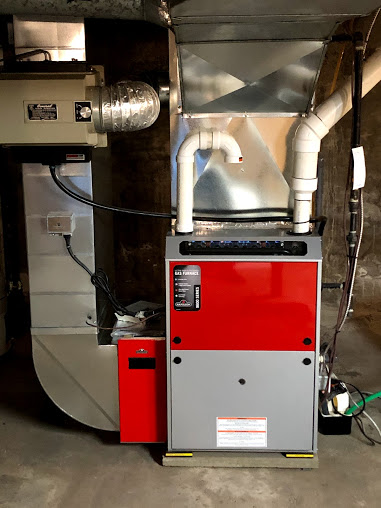 Furnaces are essential heating systems that use a controlled fuel source to generate heat. This heat is then distributed to areas such as rooms, buildings, and other structures. Furnaces are also used in residential and commercial settings for material processing.
Furnaces are essential heating systems that use a controlled fuel source to generate heat. This heat is then distributed to areas such as rooms, buildings, and other structures. Furnaces are also used in residential and commercial settings for material processing.
Furnaces heat homes and other buildings by distributing heated air through a network of ducts. The heat energy in a furnace can be produced through fuel combustion, electricity, or other methods. Therefore, it’s crucial for homeowners to seek expert guidance when considering furnace installation to select the most suitable type of furnace for their needs.
What are the Different Types of Furnaces?
Here are some of the different types of furnaces currently available:
Fuel Furnaces
Gas Furnaces: Gas furnaces are the most common type in American households, accounting for about 57% of home heating. While gas furnaces typically have a higher upfront cost than oil furnaces, the expense of installing a natural gas line can also contribute to the overall cost. New gas furnaces have Annual Fuel Utilization Efficiency (AFUE) ratings ranging from 89% to 98%. Natural gas is considered the most environmentally friendly non-renewable energy source. However, gas furnaces carry the risk of carbon monoxide leaks, making the installation of carbon monoxide detectors essential.
Oil Furnaces: Oil furnaces are more prevalent in regions where natural gas is not readily available. Most conventional oil furnaces have AFUE ratings between 80% and 90%. Although oil furnaces may have a lower initial cost and a longer lifespan (around 30 years) compared to gas furnaces, oil is generally more expensive than gas, and its prices tend to fluctuate. Additionally, oil furnaces require an on-site storage tank. To maintain efficiency, oil-fired furnaces need regular cleaning to remove soot and carbon buildup on the heat exchanger coatings.
Chemical Waste Oil Furnaces: Chemical waste oil furnaces burn oils that are no longer suitable for their original purpose, such as used motor oil or vegetable oil. These furnaces are often marketed as a “green” solution because they recycle waste oil. However, waste oil can contain lubricants, cleansers, and pollutants like lead, PCBs, and chromium, which can become airborne during the heating process.
Dual Fuel Furnaces
Dual fuel furnaces combine a heat pump for summer cooling and a gas furnace for winter heating. Heat pumps work by transferring heat from the outside into your home. In heating mode, an air handler heats the air as it passes over a coil containing hot refrigerant, and a fan distributes the heated air throughout the house. When temperatures drop significantly, dual fuel systems switch to gas furnace operation. While the installation or upgrade costs for these systems can be higher, they are among the most energy-efficient options available in terms of power consumption and overall operating costs.
Once you understand the different types of furnaces, you can make an informed decision about the best option for your property. If you need reliable furnace installation experts or furnace maintenance services in Peterborough, Kawartha Eco Climate Control is here to help. Contact us today at (705) 868-8246 to schedule a service.





